Sustainable Roofing Materials: The Rise of Eco-Friendly Options
April , 2023 | 6 min. read
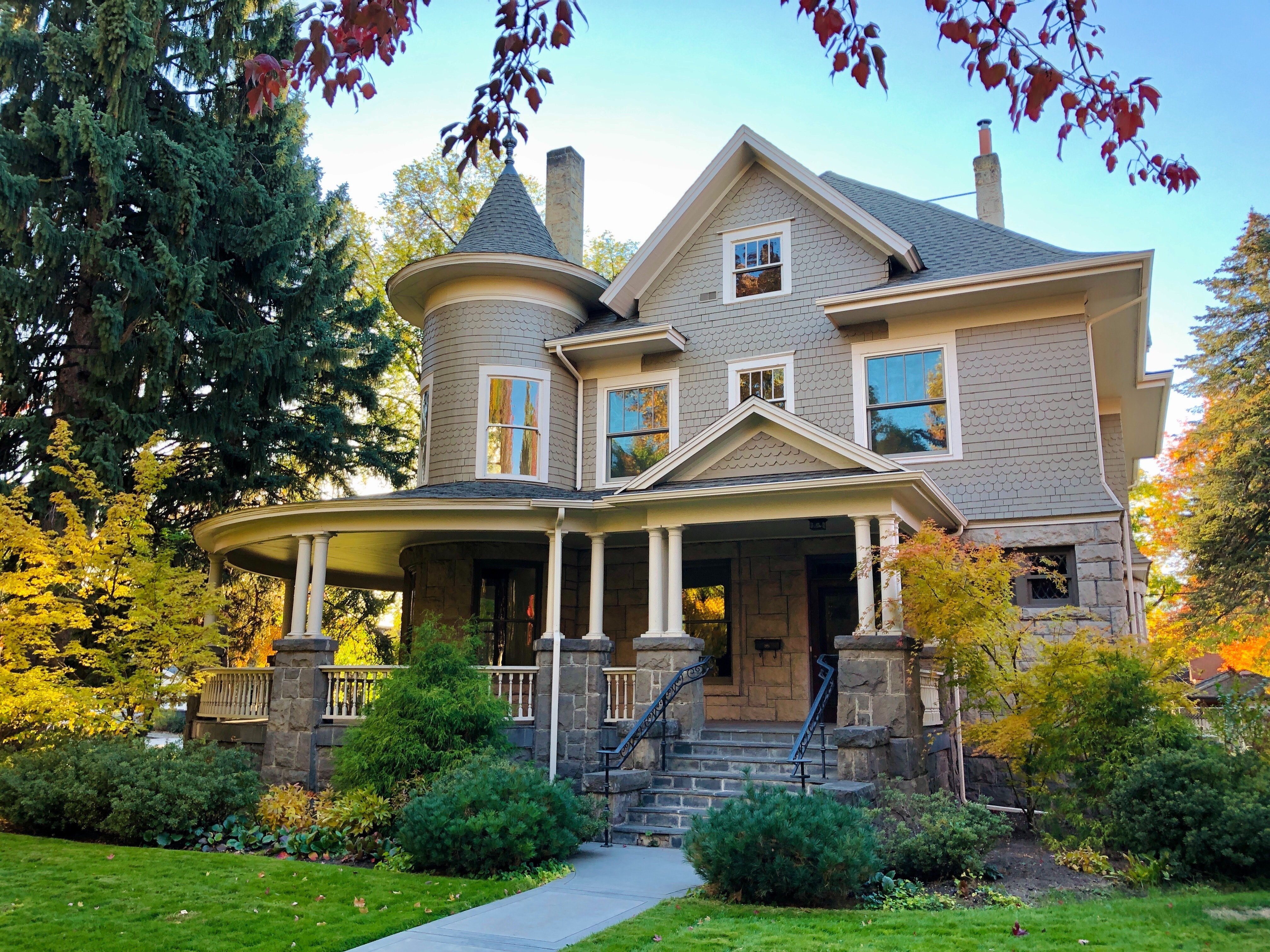
Have you ever looked up at your roof and thought, “Man, my carbon footprint must’ve been huge on this one” Well, my friend, you're not alone in this sense of environmental guilt. Times have changed though, and there's a whole world of sustainable roofing options out there, just waiting for you to discover them. From metal roofs that could survive an apocalypse to green roofs that make you feel like you're in the tropics, sustainable roofing has something for everyone.
At RoofCrafters, we’ve seen that over the past few years, there has been a significant rise in the popularity of eco-friendly roofing options. As homeowners become increasingly aware of the impact of climate change and environmental degradation, they are seeking out roofing solutions that can help to reduce their carbon footprint and promote sustainability. We only have one Earth after all, folks! Let's take care of it.
That being said, if you’re reading this article, you may have a few questions you’d like answered about sustainable roofing, and how you can lessen your impact on Mother Nature through your roofing efforts. I’m glad you’re here because, in a few short moments, you’ll learn what sustainable roofing is, what your options are as far as materials go, and what your next steps should be. So, without further ado, let’s dive into the world of sustainability!
What Is Sustainable Roofing?
Sustainable roofing is a type of roofing system that is designed to minimize the negative impact on the environment while maximizing its lifespan and energy efficiency. There are several types of sustainable roofing materials and designs, but they all share the goal of reducing energy consumption, minimizing waste, and preserving natural resources.
Some common examples of sustainable roofing materials include:
-
Metal roofing: Metal roofs are often made from recycled materials, and they can last for up to 50 years. They are also highly reflective, which helps to reduce energy costs by keeping the building cool.
-
Green roofs: A green roof is a roofing system that is covered in vegetation, such as grass or plants. This type of roof can help to reduce the urban heat island effect, improve air quality, and provide insulation for the building.
-
Solar roofing: Solar roofing systems use solar panels to generate electricity, which can be used to power the home or sold back to the grid. This type of roofing system can reduce energy costs and carbon emissions.
-
Recycled shingles: Recycled shingles are made from materials such as rubber, plastic, and wood fibers. They can be used as an alternative to traditional asphalt shingles and can last up to 50 years.
Sustainable roofing is an important aspect of home design, as it can help to reduce the environmental impact of neighborhoods while also providing long-term benefits to the homeowner.
Metal Roofing
Metal roofing is considered a sustainable roofing option for several reasons. It is highly durable and long-lasting, with an average lifespan of 50 years or more. This means that it requires less frequent replacement than other roofing materials, reducing the amount of waste generated during construction and over the lifetime of the home.
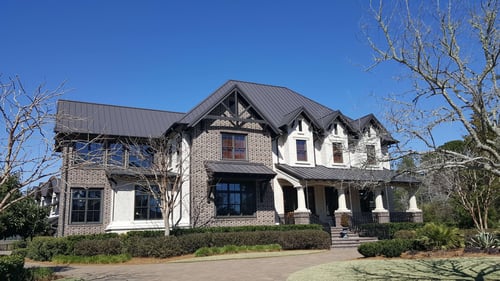
Metal roofing is often made from recycled materials, such as aluminum or steel, which can be recycled again at the end of its lifespan. This reduces the amount of materials required for manufacturing and reduces the environmental impact of the roofing system. Metal roofing is also highly reflective, which helps to reduce energy consumption and costs by reflecting sunlight and reducing heat absorption into the home. This makes it an excellent option for homes located in hot climates, as it can help to reduce the demand for air conditioning.
Green Roofs
Green roofs, which are more commonly seen in commercial roofing, are sustainable for several reasons. They can help to reduce the urban heat island effect, which occurs when cities become significantly warmer than surrounding rural areas due to the absorption and re-emission of heat by buildings and pavement. Green roofs absorb and store some of this heat, which can help to reduce the temperature of the surrounding area.
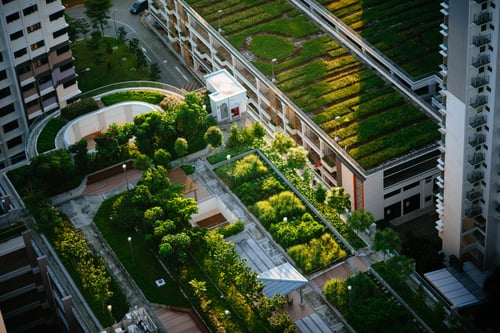
Green roofs provide natural insulation for buildings, reducing the need for heating and cooling and thereby lowering energy consumption and costs. The soil and vegetation on a green roof can act as a natural barrier to heat loss during the winter and heat gain during the summer. They can also improve air quality by absorbing carbon dioxide and other pollutants from the atmosphere. The vegetation on a green roof can act as a natural filter for rainwater, reducing runoff and improving water quality, too.
Solar Roofing
Solar roofing is a type of roofing system that incorporates solar panels to generate electricity from sunlight. Solar roofing is sustainable for several reasons and can reduce or even eliminate the need for traditional energy sources, such as fossil fuels, by generating electricity from renewable sources. This can help to reduce carbon emissions and lower the impact of energy production on the environment.
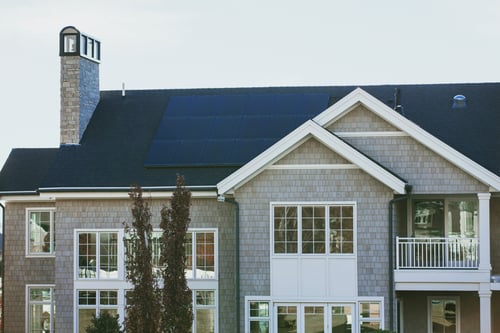
Solar roofing can reduce energy costs for homeowners by generating electricity on-site, thereby reducing reliance on grid-based electricity. This can be especially beneficial for homes located in areas with high electricity costs or limited access to traditional energy sources. It can also help to reduce demand on the electrical grid during times of high energy consumption, such as during hot summer months when air conditioning use is high.
Recycled Shingles
Recycled shingles, also known as asphalt shingles made from recycled materials, are a sustainable roofing option for several reasons. Recycled shingles are made from post-consumer waste, such as old roofing shingles and other asphalt products. This reduces the amount of waste that would otherwise end up in landfills and reduces the demand for new materials.
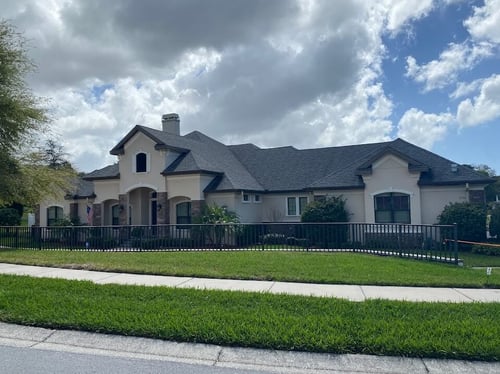
The manufacturing process for recycled shingles typically requires less energy and produces fewer greenhouse gas emissions than the production of new asphalt shingles. This can help to reduce the environmental impact of the roofing system and the overall carbon footprint of the building. Recycled shingles are often highly durable and long-lasting, with an average lifespan of 20-30 years. This means that they require less frequent replacement than other roofing materials, reducing waste and the environmental impact of roofing construction and disposal.
Excited to go Eco?
Sustainable roofing options offer a range of benefits for the environment, home and building owners, as well as communities. Metal roofing, green roofing, solar roofing, and recycled shingles are all examples of sustainable roofing options that can help to reduce energy consumption, lower carbon emissions, and promote a more circular economy for building materials. By choosing sustainable roofing options, you can reduce your environmental impact, lower energy costs, and increase the value and resiliency of your home or building.
As we continue to address the challenges of climate change and environmental degradation, sustainable roofing options will become increasingly important in creating a more sustainable and livable future. If you’re interested in learning more about the sustainable roofing options in your area it’s important to acquire several different roofing estimates from differing companies before choosing the contractor that’s the best fit for your roofing needs.
If you’re struggling to find the best contractor for the job, be sure to download “The Top 10 Most Critical Questions You Want to Ask Your Potential Roofing Contractor”. This checklist includes several different prompts to ask your roofer to prepare you to hold the company accountable for its quality of work and services when it comes to your upcoming eco-friendly roofing project.
My name is Cassie, and I’m the Content Manager here at RoofCrafters. I was born and raised in Chicago, Illinois, and made my way out to Florida post-college graduation. I’m incredibly passionate about writing and creating valuable content that helps others with the collaboration of my marketing team. When I’m not working, I enjoy shopping (a little too much), spending time at the beach, and reading!




